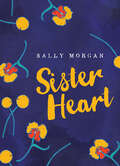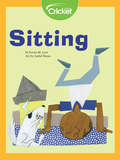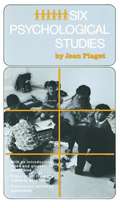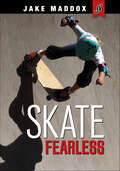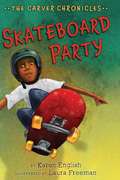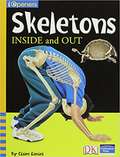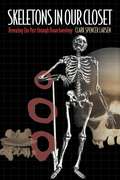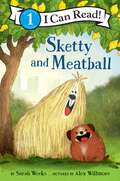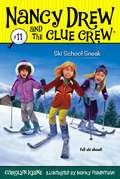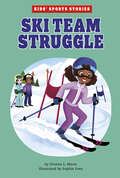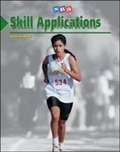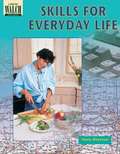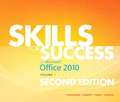- Table View
- List View
Siri Kannada Prathama Bhasha Kannada Patyapustaka class 6 - Karnataka Board: ಸಿರಿ ಕನ್ನಡ ಪ್ರಥಮ ಭಾಷಾಕನ್ನಡ ಪಠ್ಯಪುಸ್ತಕ
by Karnataka Patyapustaka Sanghaಇದು 6ನೇ ತರಗತಿಯ ಕನ್ನಡ ಪ್ರಥಮ ಭಾಷೆ ಪಠ್ಯಕ್ರಮದಂತೆ ಕನ್ನಡ ಮಾಧ್ಯಮದ ಎಲ್ಲಾ ವಿದ್ಯಾರ್ಥಿಗಳಿಗೆ ಈ ಪಠ್ಯ ಪುಸ್ತಕವು ಉಪಯುಕ್ತವಾಗಿದೆ.
Siri Kannada Second Language class 10 - Karnataka Board: ಸಿರಿ ಕನ್ನಡ - ದ್ವಿತೀಯ ಭಾಷೆ ಹತ್ತನೇ ತರಗತಿ
by Karnataka Patyapustaka Sanghaಇದು ಸಿರಿ ಕನ್ನಡ - ದ್ವಿತೀಯ ಭಾಷೆ ಹತ್ತನೇ ತರಗತಿಯ ಪಠ್ಯಕ್ರಮದ ಪುಸ್ತಕಗನ್ನು ಒಳಗೊಂಡಿದೆ.
Siri Kannada class 8 - Karnataka board: ಸಿರಿ ಕನ್ನಡ 8 ನೇ ತರಗತಿ - ಕರ್ನಾಟಕ ಮಂಡಳಿ
by Karanataka patya pustaka sanghaIts an 8th standard kannada medium siri kannada text book
Sister Heart
by Sally MorganA young Aboriginal girl is taken from the north of Australia and sent to an institution in the distant south. There, she slowly makes a new life for herself and, in the face of tragedy, finds strength in new friendships. Poignantly told from the child's perspective, Sister Heart affirms the power of family and kinship. This compelling novel about the stolen generations helps teachers sensitively introduce into the classroom one of world's most confronting histories.
Sitton Spelling and Word Skills Practice Book 4
by Rebecca Sitton Donna BernardNIMAC-sourced textbook
Six Months to Live: The Dawn Rochelle Series, Book One (Lurlene McDaniel Books #1)
by Lurlene N. McDanielThirteen is supposed to be a great age—dances, cheerleading, boys—but she never thought it would also include cancer. Dawn Rochelle is about to face the toughest fight of her life—a fight she has to win. Otherwise, she has only six months to live.
Six Psychological Studies
by Jean PiagetClassic text of child development. Translated by Anita Tenzer and introduced by David Elkind.
Six Steps to Job Search Success
by Caroline Ceniza-Levine Connie Thanasoulis-CerrachioThis book is a practical discussion of actionable steps (six of them!) that students can take to land a job regardless of the market. Whether the estimate is 25% unemployment or single-digit unemployment, that number doesn't apply to any one student. For any individual, the unemployment rate is 0% or 100%. One either has a job or doesn't. When any one person is looking for a job and there is 10% unemployment, that person just wants to be one of the nine people that has a job. Students might think even that one job is beyond their grasp. They think they don't have the right degree. Their school is in a different location than where they'd like to work. Not enough jobs are listed or employers are visiting the campus. This type of thinking cedes control of a student's search to outside forces. It is not up to professors, schools, career services support, or recruiters to get students a job. This book is about the proactive things that students can do to get themselves a job.
Skate Fearless (Jake Maddox JV)
by Jake MaddoxPJ got her first skateboard a year before her friend Marco got one. Over the years they've taught each other lots of tricks and encouraged one another to keep improving. But as they start seventh grade, PJ notices that Marco seems to want to spend more time with Ethan and Ty, two bullies who think girls can't skate. PJ decides to prove them wrong and enters a skateboarding contest. Will she prove that she is a fearless skater, or will the boys get in her head and psych her out?
Skateboard Party (Carver Chronicles #2)
by Karen English Laura FreemanRichard can't wait to show off his flat-ground Ollies at a friend's birthday party at the skate park, but a note home from his teacher threatens to ruin his plans. He really meant to finish his assignment on howler monkeys, but he just got . . . distracted. If only he could focus on his schoolwork, he wouldn't get into this kind of trouble! Can Richard manage to put off getting the note signed (and facing the consequences) until after the party, or will the deception make things even worse? Nikki and Deja fans and their male peers are sure to recognize themselves and their classmates in this humorous school story.
Skateboards from the Sea (Fountas & Pinnell Classroom, Guided Reading)
by K. L. FosterNIMAC-sourced textbook. A TALE OF TRASH. Most people look at an old fishing net and see…an old fishing net. Three friends who love the ocean see something quite different. Find out how they turn old nets into something new.
Skeletons Inside and Out
by Claire DanielComplete Classroom Library includes one each of the following: Math Library Science Library Social Studies Library Content Area Classroom Libraries include: 1 display box containing 10 6-packs (60 little books) 1 Teacher Resource Portfolio 1 Assessment Book (where available) Classroom Library Add-on Packs include 1 copy of each title from the social studies, science, and math libraries. Add-On Packs include 1 copy of each title.
Skeletons in our Closet: Revealing Our Past through Bioarchaeology
by Clark Spencer LarsenThe dead tell no tales. Or do they? In this fascinating book, Clark Spencer Larsen shows that the dead can speak to us--about their lives, and ours--through the remarkable insights of bioarchaeology, which reconstructs the lives and lifestyles of past peoples based on the study of skeletal remains. The human skeleton is an amazing storehouse of information. It records the circumstances of our growth and development as reflected in factors such as disease, stress, diet, nutrition, climate, activity, and injury. Bioarchaeologists, by combining the methods of forensic science and archaeology, along with the resources of many other disciplines (including chemistry, geology, physics, and biology), "read" the information stored in bones to understand what life was really like for our human ancestors. They are unearthing some surprises. For instance, the shift from hunting and gathering to agriculture approximately 10,000 years ago has commonly been seen as a major advancement in the course of human evolution. However, as Larsen provocatively shows, this change may not have been so positive. Compared to their hunter-gatherer ancestors, many early farmers suffered more disease, had to work harder, and endured a poorer quality of life due to poorer diets and more marginal living conditions. Moreover, the past 10,000 years have seen dramatic changes in the human physiognomy as a result of alterations in our diet and lifestyle. Some modern health problems, including obesity and chronic disease, may also have their roots in these earlier changes. Drawing on vivid accounts from his own experiences as a bioarchaeologist, Larsen guides us through some of the key developments in recent human evolution, including the adoption of agriculture, the arrival of Europeans in the Americas and the biological consequences of this contact, and the settlement of the American West in the eighteenth and nineteenth centuries. Written in a lively and engaging manner, this book is for anyone interested in what the dead have to tell us about the living.
Sketty and Meatball (I Can Read Level 1)
by Sarah Weeks"A pair we would happily hang out with again." —Kirkus ReviewsFrom Sarah Weeks, creator of the beloved series Mac and Cheese, comes Sketty and Meatball, a Level One I Can Read about two irrepressible dog best friends.Best friends Sketty and Meatball do everything together. They play together. They bark together. If Sketty sniffs a flower, Meatball sniffs a flower too. If Meatball wags his tail, Sketty’s tail is wagging too.Young readers will be delighted by two pals called Sketty and Meatball, who happen to look quite a bit like their names.Sketty and Meatball is a Level One I Can Read book, which means it’s perfect for children learning to sound out words and sentences. Whether shared at home or in a classroom, the short sentences, familiar words, and simple concepts of Level One books support success for children eager to start reading on their own.
Ski School Sneak (Nancy Drew and the Clue Crew #11)
by Carolyn Keene Macky PamintuanSnowy situation! <P><P>Nancy, George, and Bess are on a ski trip! They are having tons of fun, and Bess proves a natural for the slopes. She even wins a special award! But when the ski supply room is suddenly trashed, all eyes turn to Bess. It looks like she's a suspect this time around. <P><P> Nancy is sure Bess is innocent, but how can she prove it? And just when it seems things can't get any worse, a snowstorm closes the road home. The Clue Crew is trapped at the ski lodge! Can Nancy find a way to clear Bess's name...and will they ever get home?
Ski Team Struggle (Kids' Sports Stories)
by Dionna L. MannMaddie loves being on the ski team with her friend Sarah. Sarah is the fastest skier on the team. Maddie wants to beat Sarah’s time but is having trouble. She takes her frustrations out on Sarah. Will Maddie realize that she needs to stop comparing herself to others before she ruins her friendship with Sarah?
Skills Applications Student Book
by Siegfried Engelmann Linda Carnine Gary Johnson Linda MeyerSkills Applications is designed to help students who have difficulty in reading fluently. It lists sounds in each lesson and uses them in a passage for the student to read and practice.
Skills For Everyday Life
by Terry Overton Jane M. CoeIncludes comprehensive teacher materials and step-by-step application activities.
Skills For Success With Office 2010, Volume 1
by Shelley Gaskin Robert L. Ferrett Kris Townsend Catherine Hain Alicia VargasSkills for Success is written with today's students in mind. The book provides step-by-step guidance in an easy-to-use format. Each skill is presented on a two-page spread with clearly numbered steps and clear instruction. Key skills required to get started with Microsoft Office are covered, giving readers a complete introduction to the core tools.

